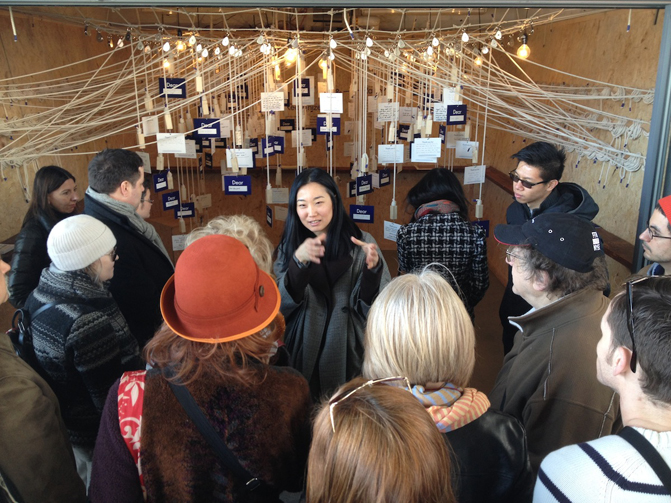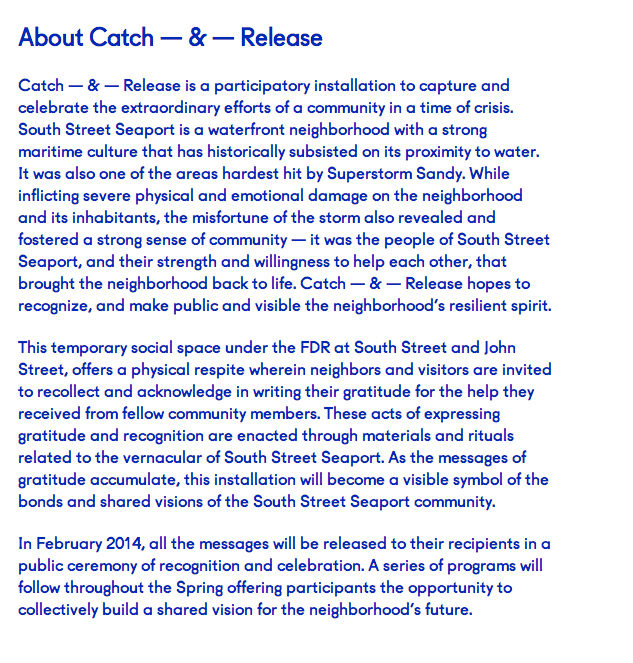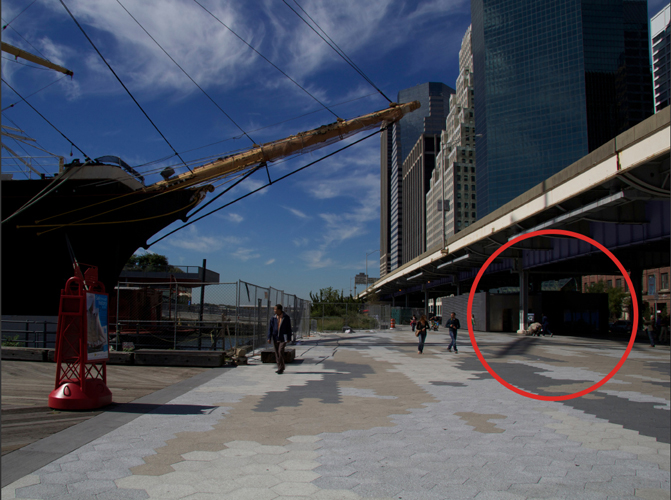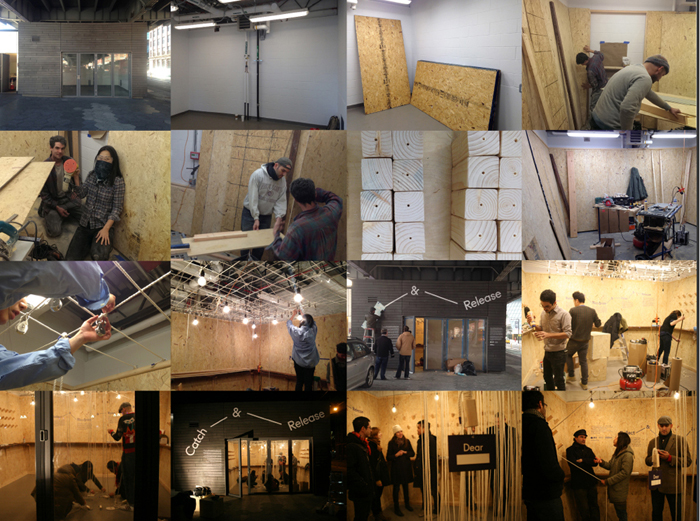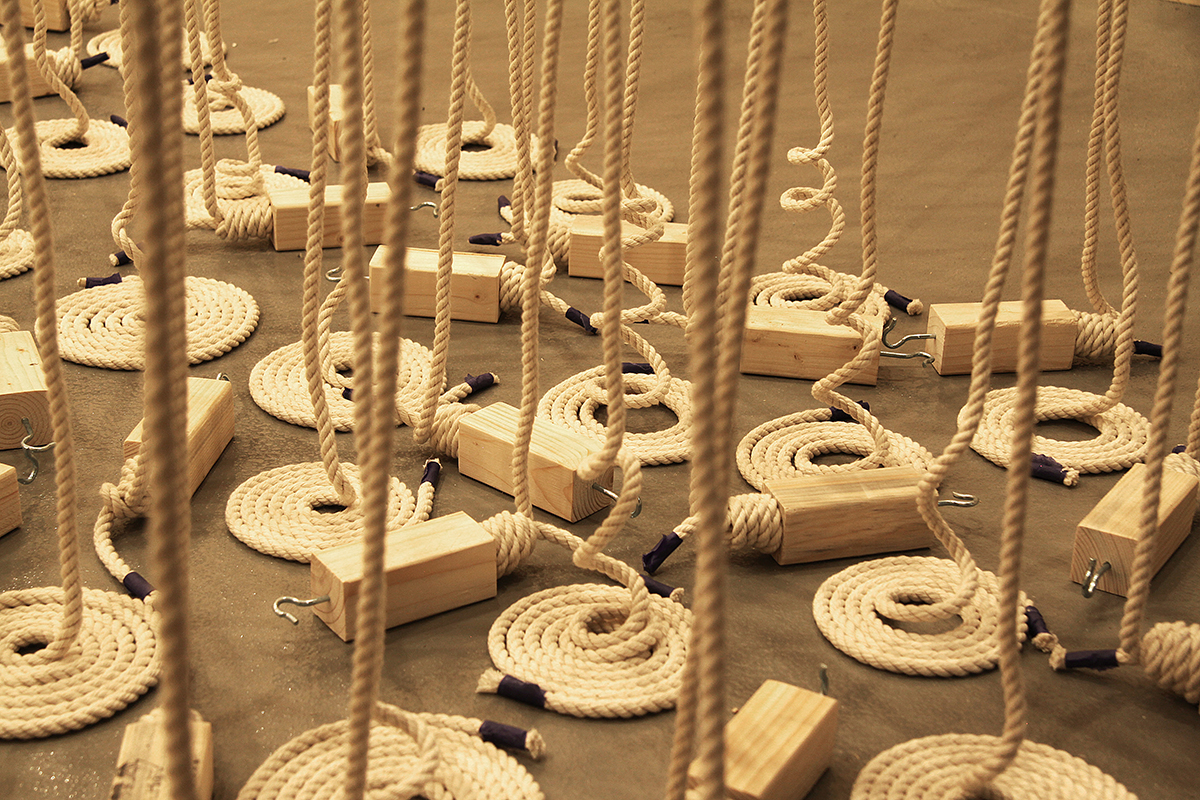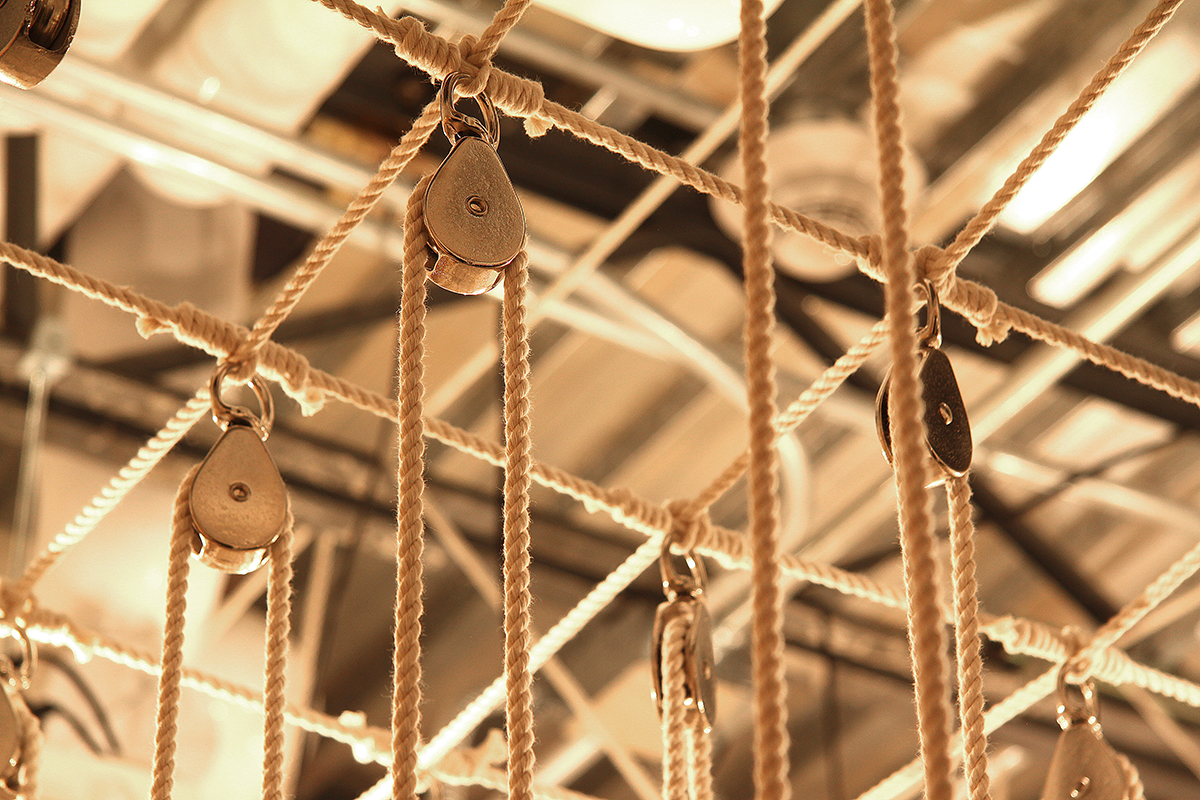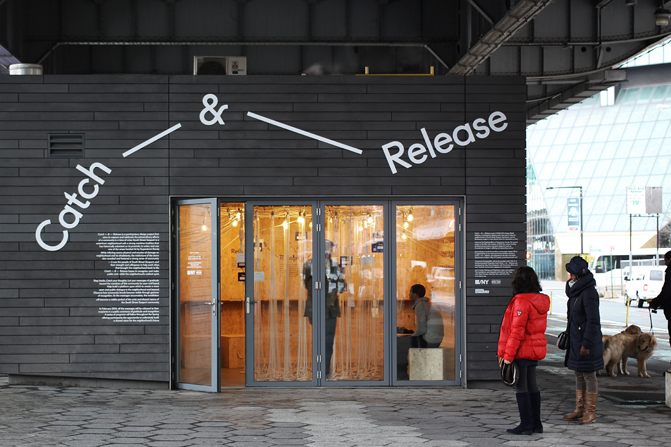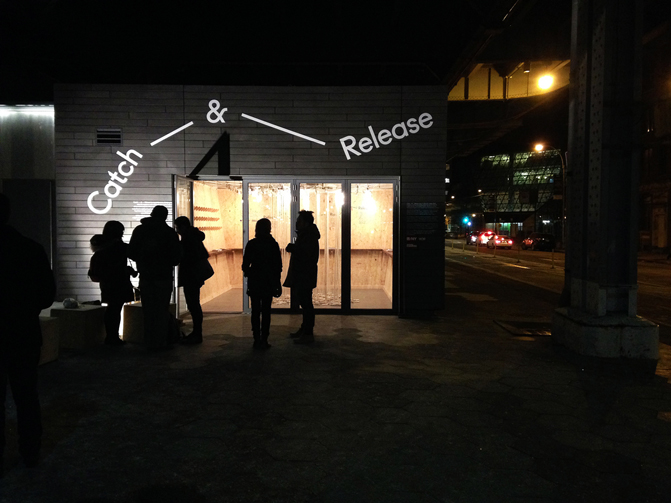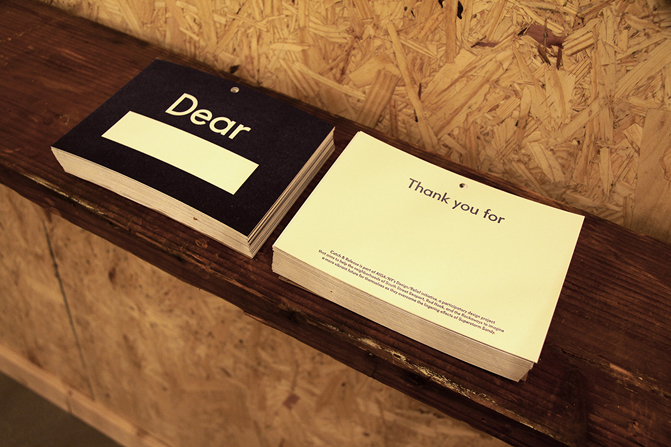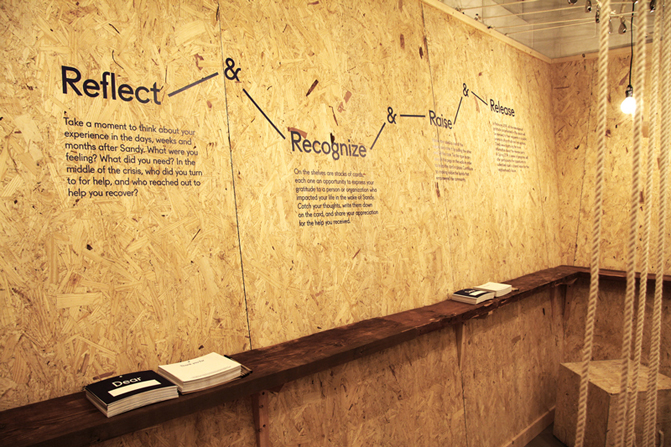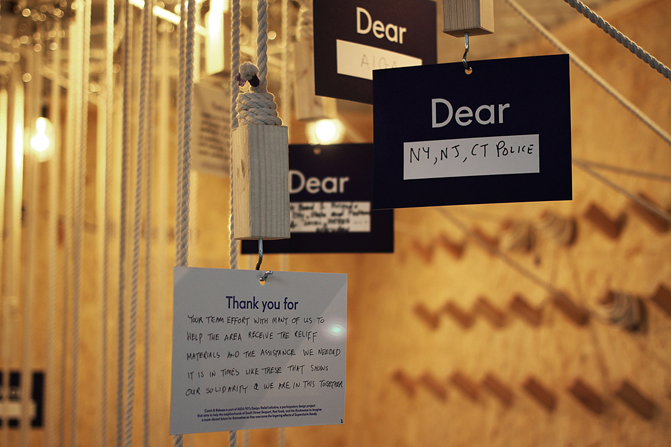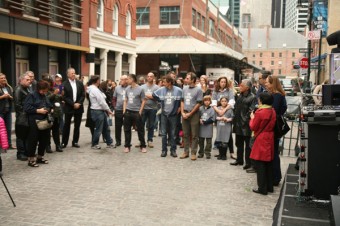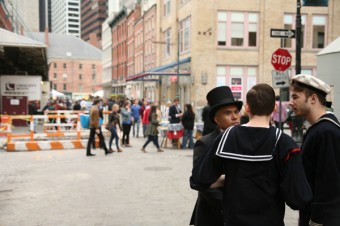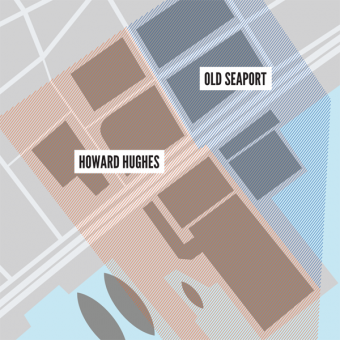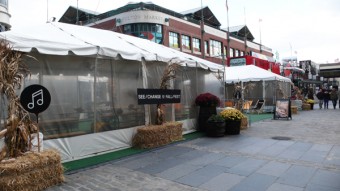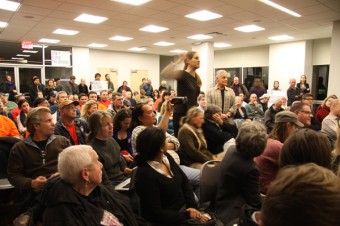Design/Relief
South Street Seaport
SOUTH STREET SEAPORT TEAM
Designer Yeju Choi, NowHere Office, Creative Director
Community Outreach Strategists
Francesca Birks and Josh Treuhaft, ARUP
Storytellers Cristian Fleming and Stephanie Lukito, Public Society, infographics designers
Sunday 23 March 2014
Seaport, A Place in the Making, Charrette+Talk
Despite the uncertain future of the South Street Seaport, one thing is sure: it’s a place of rooted culture, rich histories and meaning. The question is how can we move forward, and use design to make these cultural gems, such as the Seaport’s federal-style brick buildings and historical boats, its rich culinary and market culture, the arts community presence more visible and create a more vibrant place in Lower Manhattan.
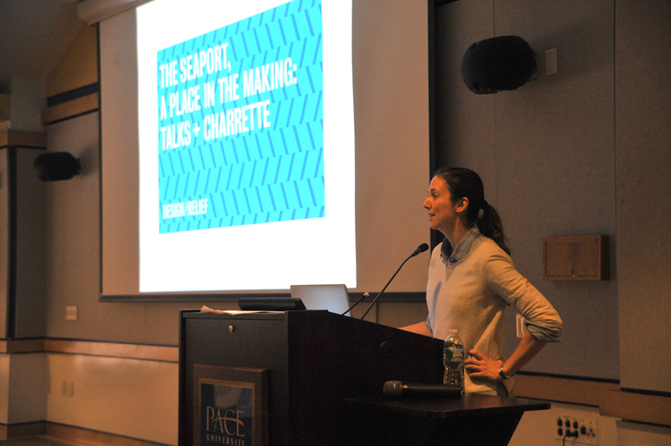
Photo: Sarah Tay
Seaport team community engagement strategist Francesca Birks introduced the event, which included a part 1 talk by placemaking expert Susan Silberberg and a part 2 event, which engaged the community to collectively make an inventory of the Seaport’s hidden treasures and stories.
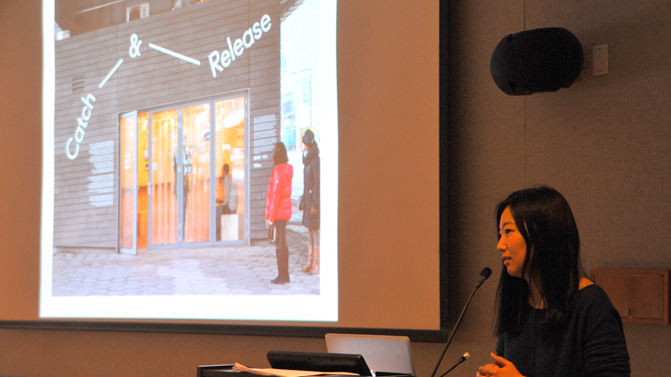
Photo: Sarah Tay
Designer Yeju Choi presenting the past, present and future of the South Street Seaport Team’s progress.
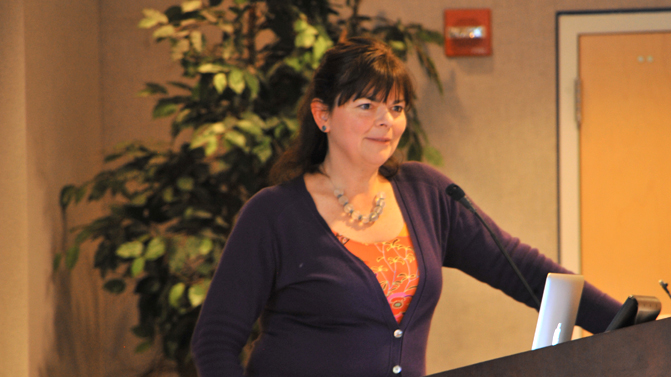
Photo: Sarah Tay
Susan Silberberg on “Places in the Making,” a convincing white paper, developed in collaboration with her MIT students in Urban Studies and Planning, which reveals the importance of the placemaking process in building social capital and restoring local political voices in communities. As a point of inspiration, placemaking expert Susan Silberberg delivered an amazing presentation, it was priceless, specifically because it was so didactic, and perfect in the context of a community engagement event with the right (Seaport) people in the room. The questions quickly fused from residents accustomed to attend hundreds of these community gatherings. Our goal was to offer alternative thinking to their usual nostalgia+complaint M.O., and also yield a “making together” moment, which Silberberg had spoken so eloquently about.
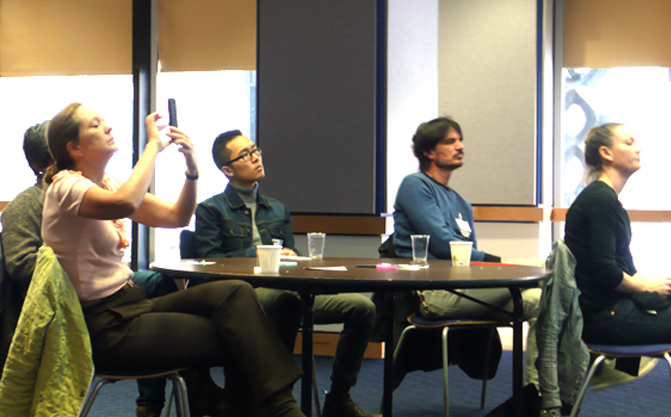
Photo: Laetitia Wolff
Community Board 1′s director, Catherine Hughes, inspired by Susan Silberberg methodology. At this table, far right, artist Sara Williams, owner of Fresh Salt restaurant, presented Out to Sea, her attempt to activate the Old Seaport with temporary art programming in empty retail spaces.
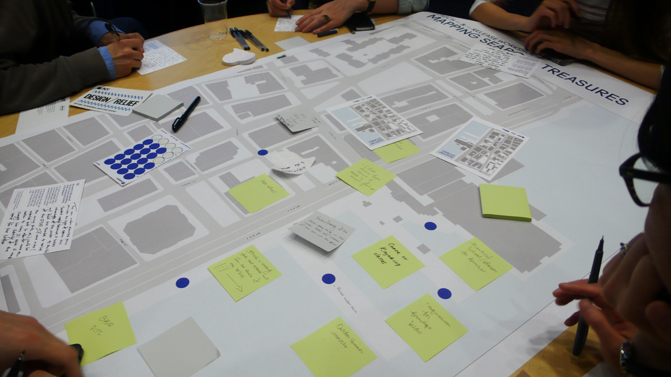
Photo: Laetitia Wolff
For this community charrette designers tapped into the wisdom of the diverse and passionate community of residents, business owners, day workers and visitors, as well as AIGA/NY design members who joined in an open, inspiring dialog to imagine the next Seaport. One of the exercises consisted of locating on large tablecloth-like maps the hidden treasures of the Seaport, unknown stories, but also troubles, wishes and the participants also identified potential programming opportunities.
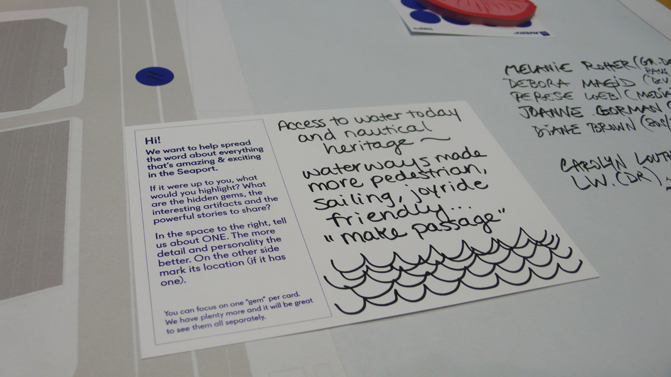
Photo: Laetitia Wolff
The second exercise consisted of writing a postcard to an imaginary recipient describing a hidden treasure in the neighborhood. Each table lead was invited to read someone else’s card afterwards as a way to build the collective conscience of this waterfront community assets.
Saturday 15 March 2014
Seaport, Repairing the Rift
Photo: Brendan Crain, Yeju Choi center in front of the Catch&Release installation
Our Seaport team closed phase 1 of Catch& Release on Saturday March 15 with a well-attended site visit co-produced with OHNY (Open House New York, the leader in urban tours). WXY Architecture + Urban Design’s Adam Lubinsky and Design/Relief designer Yeju Choi led a walking tour that explored the proposed site of the Brooklyn Bridge Beach, part of the East River Blueway Plan, and finished the walk with our pop-up participatory installation Catch — & — Release, to understand how social and infrastructural strategies for addressing the void created by the FDR can work hand-in-hand to reconnect the neighborhood with its waterfront.
Tuesday 4 February 2014
Catch&Release – the statement
Catch&Release now open until MARCH 16, 2014
Location
Design/Relief’s Catch & Release box is located under the FDR
(at South St & John St)
Catch — & — Release is open January 11- March 16, 2014
Hours of operation: TUES-SUN, 11-7
Closest subways: Fulton Street and Wall Street
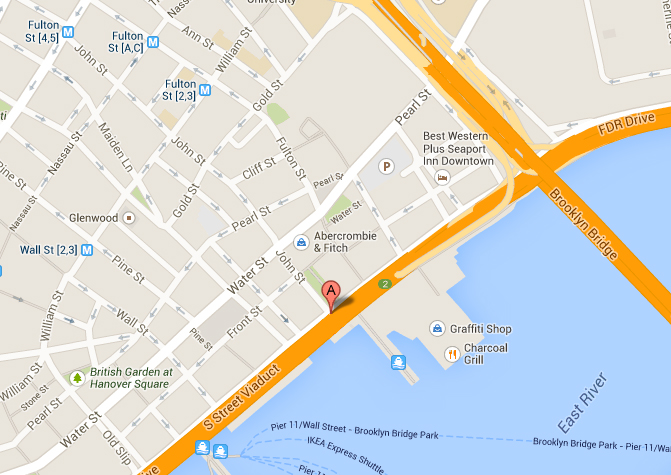
Seaport Team building the Catch&Release box
South Street Seaport, December 2013
Building the Catch&Release installation under the FDR in a 15×15 box took a lot of sweat, dust, cold, late night, hands-on building with 2x4s, and salvaged wood from Sandy. Under the supervision of lead designer Yeju Choi, design-built collaborators–including Chat Travieso, Heechan Kim, and Chris Fox– along with storytellers Cristian Fleming and Stephanie Lukito giving a hand, helped make a graphic design idea into a three-dimensional experience. The Catch&Release was up before the holidays, official time for gratitude.
A system of cordon and pulleys symbolizes the collective activation of relationships, an act that will help participants rediscover what makes them uniquely resilient. The design of the installation was largely inspired by the vernacular materials of the Seaport’s maritime activity. As a tangible design experience and a community engagement tool, the installation’s form encourages the expression of aspirations while fostering social bonds, creating new opportunities to shift perception about South Street Seaport’s future.
Photos: Yeju Choi
Friday 24 January 2014
Seaport’s Catch&Release until MARCH 16
The Catch— & — Release installation is temporarily set up in a vacant space under the FDR at John Street, from January 11 until March 16, 2014. It offers a physical respite where neighbors, visitors and all are invited to share messages of gratitude. In this interactive space, visitors are performing a sort of ritual by which their written “Thank You” notes will be publicly “caught,” and elevated to create an installation that will become the visual symbol of this place.
Photos: Yeju Choi
Soft Launch on December 19, 2013
The South Street Seaport project was soft-launched on the cold night of December 19th, with a hand-picked group of small business owners, harbor workers and Seaport supporters invited to privately inaugurate the project. Entitled “Catch&Release,” the installation is located in a vacant space under the FDR. This neutral space marks the symbolic frontier between the Old Seaport cobblestoned neighborhood and the piers on the East River.
Catch&Release installation functions as a default-space in a very polarized community, torn by its upcoming land development. In the span of a few weeks – while lit up at night like a campfire and not yet open to the public until January 11 – it has quietly become for the community a point of reference and hope in the Seaport. Sandwiched between the remaining activity of the Fulton market area and the modern piers–as they get less foot traffic in the winter, and as the demolition of the nearby Pier 17 is about to happen–our project activates an empty space while signaling a potential new destination in this temporary phase of renovation of the South Street Seaport area.
Still catching…
With information and emotions collected and shared throughout the box installation’s limited time and space, Catch&Release hopes to create a method to empower its community to have a say in its future. By “Catching” acknowledgements of gratitude through various related community engagement programming, and a parallel mapping project, the project aims to “release” this information for a second phase of design development and community engagement.
Saturday 11 January 2014
South Street Seaport Inauguration Video
SEAPORT PROJECT OPENS

Contact: Laetitia Wolff
Program Director
(212) 710-3156
email hidden; JavaScript is required
For immediate release
AIGA/NY Announces the Launch of Catch — & — Release
a participatory design project which is part of its Design/Relief initiative,
conceived by its South Street Seaport Team
New York, NY, January 6, 2014 – AIGA/NY is pleased to announce the launch of Design/Relief’s Catch — & — Release, an interactive installation that is part of a participatory design initiative aiming to help the neighborhoods of South Street Seaport, Red Hook, and the Rockaways imagine a more vibrant future for themselves as they overcome the lingering effects of Superstorm Sandy. This special project of the New York chapter of AIGA (the nation’s leading professional association of graphic designers) explores the potential of design in defining and expanding creative placemaking to positively transform communities. Design/Relief is supported by an innovation grant from ArtPlace America.
Catch — & — Release aims to capture, make visible and celebrate the resilient spirit and agency of the South Street Seaport community, one of the areas hardest hit by Superstorm Sandy. The Catch — & — Release installation is temporarily set up, in a vacant space under the FDR at John Street, from January 11 until February 2, 2014. It offers a physical respite where neighbors, visitors and all are invited to share messages of gratitude. In this interactive space, visitors are performing a sort of ritual by which their written “Thank You” notes will be publicly “caught,” and elevated to create an installation that will become the visual symbol of this place. “As messages accumulate, this installation will become a visible symbol of the unity, shared visions and social network of the South Street Seaport community,” explains Yeju Choi, lead designer on the Catch — & — Release project.
A system of cordon and pulleys symbolizes the collective activation of relationships, an act that will help participants rediscover what makes them uniquely resilient. The design of the installation was largely inspired by the vernacular materials of the Seaport’s maritime activity. As a tangible design experience and a community engagement tool, the installation’s form encourages the expression of aspirations while fostering social bonds, creating new opportunities to shift perception about South Street Seaport’s future.
“With Catch & Release, we are embarking on a partnership with the seaport community while offering an intimate community engagement model beyond the community board. We are hoping to yield valuable insights to shape a longer-term dialog and help to imagine the Seaport as a more vibrant place,” says Laetitia Wolff, Design/Relief’s Program Director.
With information and emotions collected and shared throughout the box installation’s limited time and space, Catch&Release hopes to create a method to empower its community to have a say in its future. By “Catching” acknowledgements of gratitude through various related community engagement programming, and a mapping project, the project aims to “Release” this information for a second phase of design development and community engagement.
“Design is as much about the collaborative process and act of creating as it is the final artifact –and it is always about people. As AIGA enters its centennial year, the New York chapter is thrilled to celebrate design’s influence in society through community efforts such as our Design/Relief initiative in Lower Manhattan’s South Street Seaport,” says Wily Wong, President of AIGA/NY.
Catch — & — Release was prepared for the New York State Department of State Office of Coastal, Local Government and Community Sustainability with funds provided under Title 11 of the Environmental Protection Fund. Catch — & — Release was developed by Yeju Choi of NowHere Office (designer), with Francesca Birks and Josh Treuhaft of ARUP (community engagement strategists), and Cristian Fleming and Stephanie Lukito of The Public Society (storytellers). This installation was designed and built by Yeju Choi, with Chat Travieso, Heechan Kim, and Chris Fox. Special Thanks to NYC&Co.
WHEN:
OPENING PARTY SAT JAN 11, 2014, 2-6 PM
Opening remarks and presentation at 3:00PM
CLOSING PARTY SAT FEB 1, 2014, 2-6 PM
WHERE: Design/Relief box is under the FDR (at South St & John St)
WHAT: Catch — & — Release, Jan 11- Feb 1, 2014, hours of operation, TUES-SUN, 11-7PM
About AIGA/NY
AIGA/NY is the largest chapter of AIGA, the nonprofit professional association for design. Founded in 1914 and headquartered in New York City, AIGA has brought design to the world, and the world to designers. The New York Chapter aligns with AIGA’s overall mission to advance design as a respected craft, strategic advantage and vital cultural force. From content that defines the global practice to events that connect and catalyze, AIGA/NY works to enhance the value and deepen the impact of design on business, society and our collective future. Learn more: 2006.aigany.org and follow us on Twitter at @aigany.
About DESIGN/RELIEF
Design/Relief is a participatory design initiative to help three New York City neighborhoods—Red Hook, the Rockaways and Lower Manhattan—imagine a more vibrant future for themselves as they overcome the lingering effects of Superstorm Sandy. DESIGN/RELIEF aims to demonstrate design’s role in creative placemaking, to help these neighborhoods be more navigable, visible and vibrant. The project includes a Red Hook team, a Rockaway Team and a South Street Seaport Team, all of whom will present their work in progress on Tuesday January 14, 2014 at 630PM at Parsons, 55 West 13th Street. The project is overseen by Laetitia Wolff, Program Director, with a project Board composed of Willy Wong, Glen Cummings and Manuel Miranda. For the complete list of team members and updates please check 2006.aigany.org and Twitter at #aiganydesignrelief
About ArtPlace America
ArtPlace America provides grants and loans, supports research, and conducts outreach and advocacy. To date, ArtPlace America has awarded 134 grants totaling $42.1 million to 124 organizations in 79 U.S. communities (and a statewide project in the state of Connecticut). Foundations participating in ArtPlace America include Bloomberg Philanthropies, The Ford Foundation, The James Irvine Foundation, The John S. and James L. Knight Foundation, The Kresge Foundation, The McKnight Foundation, The Andrew W. Mellon Foundation, The William Penn Foundation, The Rockefeller Foundation, Rasmuson Foundation, The Surdna Foundation, and two anonymous donors. ArtPlace America also seeks advice and counsel from close working relationships with various federal agencies, including the National Endowment for the Arts, the departments of Housing and Urban Development, Health and Human Services, Agriculture, Education, and Transportation, along with leadership from the White House Office of Management and Budget and the Domestic Policy Council. ArtPlace America is also supported by a $12 million loan fund capitalized by six major financial institutions and managed by the Nonprofit Finance Fund. Participating institutions are Bank of America, Citi, Deutsche Bank, Chase, MetLife, and Morgan Stanley.
If you are interested in receiving dedicated emails regarding DESIGN/RELIEF please update your email preferences here.
Thursday 5 December 2013
South Street Seaport’s best kept secrets
DISCOVERING THE MULTIFACETED SSS
November 2013
Seaport residents and the Old Seaport Alliance unveil new neighborhood branding identity at a block party on October 19th
Photo: Cristian Fleming
South Street Seaport is a neighborhood that keeps its secrets. The true story of the seaport has long been less than clear, even for long-time residents of New York. In fact, asking 10 people what the place is about can get you 10 unique answers. A historically important American landmark, a shopping destination, and Manhattan’s closest connection to the water that surrounds it, South Street Seaport suffered some of the heaviest destruction during Hurricane Sandy last year, inundated with 7-foot flood waters that caused extensive damage, functionally shuttering the neighborhood for the better part of the following year. The receding waterline not only left in its wake a crippled neighborhood, but also exposed some of the deep rooted issues that make the neighborhood so difficult to define. It is in this climate that we enter the story and begin our work.
Living in New York City for 20 years, I admit that while I feel I know my town, the seaport has always confounded me. We’ve spent the past few weeks in the neighborhood and each time there my understanding shifts and I learn how little I ever knew about the richness and depth of the neighborhood – from people spontaneously wearing 19th century clothing, to impromptu busking (which is apparently a common seaport neighborhood pastime), to the budding New Amsterdam Market that has sprung up in recent years on the site of the old Fulton Fish Market. I am quickly learning there is much more to this place than I ever imagined, and so much to explore.
Residents in period costumes for the Old Seaport block party stand
in front of Beekman Street, which divides the neighborhood in two
Photo: Cristian Fleming
Here’s the challenge, though. The seaport is a small, 12 square block area surrounded by the Financial District, with the distinction of hosting some of the city’s oldest architecture, as well as one of its largest shopping malls (Pier 17). Walking the neighborhood, it doesn’t take long to arrive at the realization that the seaport has a split personality, with each half each going so far as to have their own, completely unrelated brands. And it’s not like the difference is subtle. Crossing Beekman Street, which divides the two halves, is almost like walking into a different world. Everything looks different, sounds different, and even smells different.
The neighborhood breaks-up between the residential/local are and
what Howard Hughes Corporation controls, including the upcoming Pier 17 renovation
To understand the current underlying dynamic we need to back up for a minute, to 1983, and the arrival of one of the largest development companies in the US, the Howard Hughes Corporation. Howard Hughes envisioned the seaport as a premiere shopping destination, complete with national retailers, restaurant chains, and entertainment. Since the corporation’s arrival it has set out an aggressive plan to realize this vision. The trouble is that there was already a vibrant local residential and business community. This gave rise to some obvious difficulties, and over the course of 30 years those divisions have deepened, bringing us the South Street Seaport we know today.
Sea/Change is the central branding stage for Howard Hughes,
with mainstream programming activating the plaza around the old Fulton fish market
Photo: Laetitia Wolff
Without a doubt Hurricane Sandy was deeply damaging to the neighborhood by every imaginable metric, but what if the storm also exposed a remarkable opportunity? After all, the seaport’s two separate personalities experienced it together. Could something wonderful come of such an awful experience that tells a new story of the neighborhood – a clear story that rediscovers what the seaport is for all of its stakeholders? How might design be instrumental in realizing that opportunity? What should it do? Why? These are some of the questions we are asking as we begin the South Street Seaport DESIGN/RELIEF project. One thing that we are sure about, though, is that the neighborhoods that suffered most at the hands of the storm have had an endless stream of organizations arriving to do something for them, many unrequested, and often with mixed results for the community. But so few have asked the inhabitants of these neighborhoods what could be done with them. This is our challenge.
Community board 1, November 2013: Residents react to a proposal for a high rise
in the footprint of the Old Fulton Fish Market next to Pier 17
Photo: Cristian Fleming
Tuesday 5 November 2013
DESIGN/RELIEF: OCTOBER PRESS RELEASE

Contact: Laetitia Wolff
Program Director
(212) 710-3156
email hidden; JavaScript is required
AIGA/NY Announces Final Selection of Design/Relief TeamsDesign/Relief teams begin collaborations in Red Hook, the Rockaways and South Street Seaport on the one-year anniversary of Hurricane Sandy as part of AIGA/NY’s efforts to inspire communities through graphic design
For immediate release: New York, October 28, 2013: AIGA/NY announces final selection of Design/Relief teams. Design/Relief is a participatory design initiative that aims to support three New York City neighborhoods – Red Hook, the Rockaways and South Street Seaport – imagine a more vibrant future for themselves as they overcome the lingering effects of Superstorm Sandy. This special project of the New York chapter of AIGA explores design’s potential in defining and expanding creative placemaking to positively transform communities. Design/Relief is supported by an innovation grant from ArtPlace America.
This designer-led initiative will establish collaborations with various partners-stakeholders, who can reflect the diversity of interests in a given community, but not necessarily with one single client in mind. Each Design/Relief team will work collaboratively with their respective sites (Red Hook, Rockaways and South Street Seaport) to develop an implementable design concept that addresses livability, legibility, navigability and vibrancy.
Each team includes one to two graphic designers tasked to identify an opportunity and a way to materialize a meaningful, neighborhood-specific design project, supported by one or two community engagement strategists who will focus on outreach and participation, along with one or two storytellers who will visually document the design process and create visibility for the project through regular blog reports. Each team will work with the community to leverage existing assets and efforts while they contribute to creative placemaking definitions and build a case study to inspire other AIGA chapters across the country to take on similar design-led initiatives.
COMPLETE LIST OF DESIGN/RELIEF TEAM MEMBERS
AIGA/NY Executive Board: Willy Wong, Glen Cummings and Manuel Miranda
AIGA/NY Design/Relief Program Director: Laetitia Wolff
RED HOOK TEAM
Designers Anke Stohlman, Lil’Robin, principal with Alicia Cheng and Sarah Gephart, mgmt., principals
Community Outreach Strategists
Amplifier Project (Jerome Chou, James Andrews and Stephen Zacks)
Storyteller
David Al-Ibrahim, communication designer and writer
ROCKAWAY TEAM
Designers Natasha Chandani and Danielle Aubert, Placement Publication, founders
Community Outreach Strategist Daniel Latorre, The Wise City, founder
Storytellers Carolyn Louth, art director with Rich Tu, illustrator
SOUTH STREET SEAPORT TEAM
Designer Yeju Choi, NowHere Office, Creative Director
Community Outreach Strategists
Francesca Birks and Josh Treuhaft/ARUP
Storytellers Cristian Fleming and Stephanie Lukito, Public Society, infographics designers
“This curated group really fits the profile of participants we were aiming to recruit, i.e. skilled mediators, resourceful thinkers and makers, eager to collaborate and bring their design-focused vision to help reinvigorate a sense of identity in these waterfront neighborhoods still hit hard as we approach the one-year anniversary of Sandy,” says Laetitia Wolff, program director of the initiative. The stellar cast of emerging designers features varied and complementary backgrounds in editorial design, interactive design, digital strategy, art direction, photography and illustration, as well as activists familiar with community engagement.
The Design/Relief teams were introduced at a recent kick-off event, which included a presentation of the program’s framework, goals, team structure and collaborative approach. A selection of community representatives from the three neighborhoods also shared their experience and perspectives, providing inspiring, informative and touching testimonies. Stakeholders ranged from NYC Small Business Services grant managers focused on cohesion in the South Street Seaport merchants community, photographers documenting the effects of Sandy on low-income residents and independent business owners of the Rockaways to social services and community activists in Red Hook. The presence of these community leaders marked the first step towards establishing a partnership with neighborhood associations and nonprofits, small businesses, Business Improvements Districts (BID), and individuals who have a vested interest in rebuilding efforts in these neighborhoods.
“Design/Relief hopes to foster a sense of camaraderie among its participating members, and encourage discussion around graphic design’s creative process and capacity for social and cultural impact, while modeling methods of engagement and eventually setting standards of best practices in the field of community-centered design,” says Willy Wong, President of AIGA/NY.
As part of the Design/Relief ecosystem, AIGA/NY will develop a series of public programs to create interactive moments for both the selected team members and the design community at large, while expanding the conversation around creative placemaking in each of the neighborhoods. AIGA/NY was proud to invite inspiring leaders in community development such as UK-based expert Donald Hyslop, Head of Regeneration and Community Partnerships at Tate Modern, London. “I really enjoyed my visit to Red Hook. As the area rebuilds I hope there will be many opportunities for creative projects, both temporary and permanent, to be developed in partnership with and for local people. Design/Relief has a vital role to play in this work and I look forward to keeping in touch with the project,” says Hyslop.
For complete biographies of the team members, visit here
If you are interested in receiving dedicated emails regarding DESIGN/RELIEF please update your email preferences here.
About AIGA/NY
AIGA/NY is the largest chapter of AIGA, the nonprofit professional association for design. Founded in 1914 and headquartered in New York City, AIGA has brought design to the world, and the world to designers. The New York Chapter aligns with AIGA’s overall mission to advance design as a respected craft, strategic advantage and vital cultural force. From content that defines the global practice to events that connect and catalyze, AIGA/NY works to enhance the value and deepen the impact of design on business, society and our collective future. Learn more: 2006.aigany.org and follow us on Twitter at @aigany.
About ArtPlace America
ArtPlace America provides grants and loans, supports research, and conducts outreach and advocacy. To date, ArtPlace America has awarded 134 grants totaling $42.1 million to 124 organizations in 79 U.S. communities (and a statewide project in the state of Connecticut). Foundations participating in ArtPlace America include Bloomberg Philanthropies, The Ford Foundation, The James Irvine Foundation, The John S. and James L. Knight Foundation, The Kresge Foundation, The McKnight Foundation, The Andrew W. Mellon Foundation, The William Penn Foundation, The Rockefeller Foundation, Rasmuson Foundation, The Surdna Foundation, and two anonymous donors. ArtPlace America also seeks advice and counsel from close working relationships with various federal agencies, including the National Endowment for the Arts, the departments of Housing and Urban Development, Health and Human Services, Agriculture, Education, and Transportation, along with leadership from the White House Office of Management and Budget and the Domestic Policy Council. ArtPlace America is also supported by a $12 million loan fund capitalized by six major financial institutions and managed by the Nonprofit Finance Fund. Participating institutions are Bank of America, Citi, Deutsche Bank, Chase, MetLife, and Morgan Stanley.
DESIGN/RELIEF INITIATIVE IS FUNDED BY:
